|
FEATURES
Preserving Tianjin | China Heritage Quarterly
Preserving Tianjin:
Colonial-style houses and martial arts fiction
Chen Songchuan 陳松全
University of Bristol
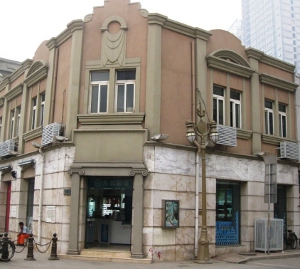
Fig.1 The Tianjin office of Ta Kung Pao 大公報 in 2009. Li Shoumin (penname Huanzhu Louzhu) worked here at a time when the paper serialized martial arts fiction in its pages. (Photograph: Chen Songchuan)
Just as a conference on martial arts fiction was being held in Tianjin on 16 May 2009, a campaign launched to preserve a block of colonial-style houses in the city’s Five Street Area (Wudadao 五大道) also reached a climax. A memorandum issued by the central authorities in Beijing had been received by the campaign organisers the day before and it gave significant added weight to their efforts, ensuring the preservation of the buildings.
Both the conference and the campaign were the work of a small group of netizens who had banded together via the Tianjin edition of Memory of China (Zhongguo jiyi 中國記憶; www.memoryofchina.org), a website launched in 2006. In the non-virtual ‘real world’ they established a group called Volunteers for the Protection of Tianjin’s Architectural Heritage (Tianjinshi jianzhu yichan baohu zhiyuanzhe tuandui 天津市建筑遗产保护志愿者团队).
The Volunteers announced three guiding principles for the preservation of the city’s heritage:
1. To respect the law, that is, seek the permission and willing co-operation of the government;
2. To remain a volunteer group, that is to retain an independent status as a self-funded group with no connection to governmental bodies or private companies; and,
3. To work for the public good, that is, preserve the multinational architectural heritage of Tianjin.
Such a strategic approach was further supported by their meticulous work in identifying heritage sites through which they linked the current city to its previous incarnations. The Volunteers have been lauded for their rigorous scholarly approach which draws heavily on archives of images and oral history materials, and they have garnered support from scholars who were behind the move to preserve Five Street Area as well as sympathy from the lower-echelon local bureaucrats who frequently leaked land planning applications to their web pages.
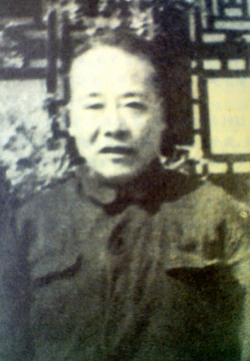
Fig.2 A ‘liberated’ Li Shoumin in a Lenin jacket.
Among the Volunteers there was a subgroup with a particular shared interest in martial arts fiction (wuxia xiaoshuo 武侠小说). They married their fascination with Tianjin heritage and wuxia fiction by identifying a number of old houses where famous writers such as Li Shoumin 李壽民 (1902-61, known by his nom de plume Huanzhu Louzhu 還珠樓主) lived and wrote their highly popular novels.[1] A few other places, such as the offices of newspapers and magazines that published martial arts fiction, were identified among the tea-houses that had been frequented by the writers. This group of Volunteers have argued that Tianjin was the capital of the ‘Northern School’ of martial arts fiction, and they have devoted themselves to mapping the history of wuxia culture in the city’s labyrinth of buildings. Their efforts are part of an ongoing national trend whereby each city, town and region attempts to claim historical celebrities for themselves. It is a process that contributes, often inadvertently, to the forging of local identities as well as providing new fodder for tourist marketing.
The Volunteers were further encouraged in their endeavours to bring heritage preservation and martial arts fiction together by the fact that the leading scholars of the wuxia genre from Taiwan, such as Kung P’eng-ch’eng (Gong Pengcheng 龔鵬程), Lin Pao-chun (Lin Baochun 林保淳) and Yeh Hung-sheng (Ye Hongsheng 葉洪生), joined leading scholars in mainland China to participate in the conference they hosted. Prior to the conference the Volunteers had produced five special issues of Tianjin Memory related to ‘Northern School’ martial arts fiction. This was a factor that contributed to the decision by prominent Taiwan academics to participate in the Tianjin gathering.
The three Taiwanese scholars belong to a group of specialists in classical Chinese literature and history who famously lecture in an ‘old-fashioned’ or traditional style dressed in blue scholar-gowns. They continue to compose poems in literary Chinese and do their best to pursue a traditional lifestyle. I was one of the many students in awe of them in my university days. Their reinterpretation of Chinese classical literature, especially with regard to aesthetic theory, is still among the most respected endeavours in the field.
Martial arts fiction embodies everything characteristic of old-style heroism, from self-cultivation, social justice, heroic-egotism and superman-like strength, to the worship of talent and physical-beauty, a stylish and leisurely life, and the enjoyment of food and writing. Above all, it creates an imagined classical world that neither modern city life nor traditional Chinese culture offers. Works of martial arts fiction are written to be page-turners, luring readers into a unique world by creating a dreamscape. There have been cases of confused young men setting out to find a martial arts master in the deep mountains of Taiwan. The 2000 movie Crouching Tiger, Hidden Dragon was a Hollywood expression of a martial arts fever that swept Hong Kong and Taiwan for decades. It was created by a passionate reader of martial arts fiction, Ang Lee.
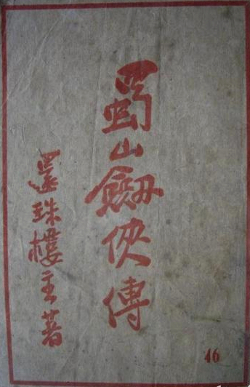
Fig.3 The title page of one of the most famous martial-arts novels by Huanzhu Louzhu/Li Shoumin.
To K’ung P’eng-ch’eng and his literary comrades, the era of searching for aesthetics in classical literature and individual emancipation in the style of the Wei-Jin era (220-589 CE) has long passed, as has the martial arts fever of Taiwan and Hong Kong. The latest medium available to enter the imagined world of martial arts is no longer the written world, instead interactive online and video games allow people of all ages to delve into this beguiling universe.
Martial arts fiction, and its virtual offshoots, is a continuation of popular Qing- and Republican-era fiction. From the 1990s on the mainland this style of fiction has becomes something of a ‘new classic’ and in recent years it has become one of the ways by which China and the Chinese are re-imagining their cultural heritage. The message gleaned from this active reading of martial arts stories, and the vicarious life that they allow, is one that is potent and rich in heroic romanticism. The difference is that China, the ‘original home’ of the Chinese and their martial arts world, can construct and reconstruct physical cultural heritage in a manner that people in Taiwan and Hong Kong could only ever imagine.
In a sense fiction has been repatriated, and a new heritage is being established as people reclaim the mainland-born writers of martial-arts novels. The passion of cultural heritage is real and given China’s political climate efforts to protect it, just like the valour of martial arts characters is, nothing less than heroic. But the Volunteers are, in my opinion, real participants rather than faddish game-players. In maintaining their ‘three principles’ (mentioned above) they are wending a politically-sensitive way through the thicket that is heritage preservation in China. On the one hand, heritage is about protecting the nation’s cultural properties. This is a legitimate and officially sanctioned activity. On the other hand, any action as such is politically sensitive; the local governmental officials are often closely linked to real estate developers, even if they themselves are not developers. The Tianjin Volunteers emphasise that they are campaigners instead of petitioners; and they are volunteers rather than being a group or an organization. They asked me not to include their individual names in this paper and to avoid writing about them in a way that is critical of the authorities. They know the system well enough to be able to stand at the forefront of it while making sure they don’t put a foot wrong. They are trying to assume a cultural responsibility to negotiate for the future while avoiding the destruction of the past.
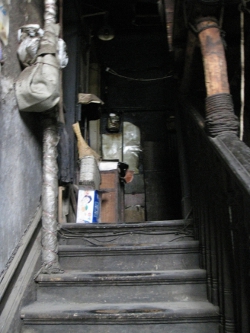
Fig.4 A staircase in a house where the novelist Zhang Aling 張愛玲 lived for six years as a child. The house was first identified by the Tianjin Volunteers. (Photograph: Chen Songchuan)
Their strategic positioning relative to the government cannot simply be compared to the scholar-officials of dynastic times. Those earlier ‘participant-activists’ were generally forced either to be servants of the dynasty or martyrs, be they Confucian or Taoist. Today’s netizen-intellectuals, the Volunteers, are working within the system yet they are not fully absorbed by it. This stance could hardly be envisaged by scholars in the past, or indeed by such academics as K’ung, Lin and Yeh from Taiwan, who have been active in a completely different environment.
Heritage conservation and martial arts fiction have converged in Tianjin as a result of the efforts of the Tianjin Volunteers. It is more the result of a correlation than a coincidence. The intellectual spirit of dynastic China (not necessarily ‘Confucianism’), has found a contemporary incarnation in these netizen-intellectuals. The history of the ‘Northern School’ of martial arts culture is not the only link. The heritage-martial arts enthusiasts have positioned themselves in such a way that the state finds them useful. However, to date it would seem that they haven’t sold out to the commercial world. Judging from recent developments, such as the success of the campaign to preserve the Five Street Area and the positive reports in the official Chinese media in November 2009, it would appear that, for now, their strategy is working and enjoying recognition by the state.[2] The question remains, however, how far can they go without touching on some sensitive nerve of the party-state, or before they attract the attention of business interests desirous of co-opting them? At the time of writing, in late January 2010, the Tianjin Volunteers had moved their virtual home to a BBS forum under the management of the China Culture Relics Protection Foundation, which was established in 1992. Prior to this their home site was www.memoryofchina.org, as mentioned earlier. I shall only report that the restructuring of the Memory of China was the main reason for this relocation, although the move attracted criticism.
To the Volunteers and others, Tianjin’s colonial houses are germane to the city’s ‘Chinese heritage’. They are not concerned that the colonial-era houses that they are striving to preserve had once belonged to ‘non-Chinese’ (French, British, Americans, Belgians, Russians, Japanese, Austria-Hungarians, Italians and Germans). The areas in which these houses are located are no longer called ‘Concessions’, rather, the government calls them such things as ‘Italian-style Scenic Neighbourhood’ (Yishi fengqingqu 意式風情區—see Maurizio Marinelli’s essay ‘The “New I-Style Town”’ in Features) and so on. These territories have been ‘repatriated’, the buildings are ‘Chinese’ albeit refracting foreign styles. National history looms large as it reclaims the city; paradoxically, Tianjin, as a multilayered living architectural and archaeological site, is being preserved precisely because of this rearticulated sense of ‘Nation’.
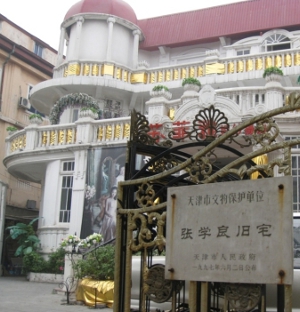
Fig.5 The military figure Zhang Xueliang’s 張學良 Tianjin house, now a wedding photo studio. (Photograph: Chen Songchuan)
I was taken on a tour of some heritage buildings by members of the volunteer group. We ended up at the Dahua Hotel (Dahua fandian 大華飯店), formerly a western-style club and a place where, some eighty years ago, the prominent army man Zhang Xueliang 張學良 (1901-2001) allegedly enjoyed trysts with Zhao Si 趙四 (1912-2000), before their eventual marriage. We went into the once-spacious ballroom, which is now divided into small units, a kind of ‘indoor slum’. A woman in her pyjamas opened one of the dark, oily doors and asked coldly when we’d be demolishing the place. It would seem that both the woman, and Tianjin, are waiting for the next round of modernization, a hundred and fifty years after the draining of the old marshlands first turned this area into a city.
The Volunteers inhabit the Tianjin of today while imagining constantly the city of the past. The way they talk, the way they hold their chopsticks, and the dignity conveyed by their thoughtful conversation across the table in a rundown noodle restaurant constantly reminded me of the intellectuals I have encountered in books about China’s past. Had I not stumbled into a traditional-style intellectual spirit that has found embodiment in these netizens, these grass-roots nobodies? They exist, and seemingly flourish, despite the odds in a politically hypersensitive China and in a Tianjin where fast-rising skyscrapers overshadow colonial as well as old Chinese-style houses. Perhaps in the nexus between East and West, the past and the future can be found in these heartfelt attempts at heritage preservation? When another page of history is turned, the Volunteers themselves will count as another layer of Tianjin heritage. And, when that page is turned, I hope it will be done with care and thoughtfulness.
Notes:
[1] Among Huanzhu Louzhu’s most noted martial arts works, also known as ‘sword-knight fiction’ (jianxia xiaoshuo 劍俠小說), are 蜀山劍俠傳 and 青城十九俠.
[2] For an official 23 November 2009 Xinhua News Agency report on the Volunteers, see http://news.xinhuanet.com/video/2009-11/23/content_12527033.htm. Accessed on 14 February 2010.
|